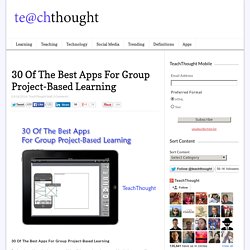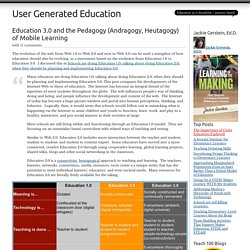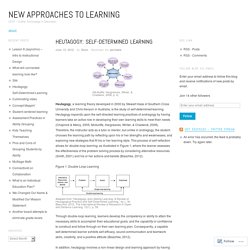

L3T 2.0. Elearning vs digitalisierung. Gilson Maynard Young Vartiainen Hakonen 0. ERB1405 pdf. Gilson Maynard Young Vartiainen Hakonen 0. Introduction to the SAMR Model Video. Das SAMR Modell von Puentedura. Übersetzung der wichtigsten Begriffe ins Deutsche.

Das SAMR Modell eignet sich, um Lehrenden, die eher auf analoge Lehrmittel zurückgreifen, die Vorzüge digitaler Werkzeuge näherzubringen. Am Modell lässt sich erklären, wie die Bearbeitung und Gestaltung von Aufgaben durch technische Hilfsmittel verbessert werden können. Dazu wird zunächst die Nutzung grundlegender technischer Funktionen eingeführt und danach die Möglichkeit einer Umgestaltung von Aufgaben gezeigt.
Lehrende können so auf einer niedrigen Stufe einsteigen und bei Bedarf den Technologieeinsatz für die Gestaltung Ihrer Aufgaben erhöhen. Auf der untersten Ebene wird mit der einfachen Ersetzung (Substitution) analoger Aufgaben/Materialien durch digitale Repräsentationen begonnen. Eine Verbesserung (Enhancement) wird auf der zweiten Ebene Erweiterung (Augmentation) sichtbar. Der Bereich der Umgestaltung (Transformation) von Aufgaben beginnt auf der Ebene der Änderung (Modification). Übersetzungen der Begriffe als Präsentation. Samr model.
30 Of The Best Apps For Group Project-Based Learning. 30 Of The Best Apps For Group Project-Based Learning Project-based learning is a matter of identifying needs and opportunities (using an app like flipboard), gathering potential resources (using an app like pinterest), collecting notes and artifacts (with an app like Evernote), concept-mapping potential scale or angles for the project (using an app like simplemind), assigning roles (with an appp like Trello), scheduling deadlines (with apps like Google Calendar), and sharing it all (with apps like OneDrive or Google Drive).

With that in mind, below are 30 of the best apps for getting this kind of work done in the classroom, with an emphasis on group project-based learning apps for both Android and iPad (and even a few for plain old browsers). 30 Of The Best Apps For Group Project-Based Learning. Education 3.0 and the Pedagogy (Andragogy, Heutagogy) of Mobile Learning. The evolution of the web from Web 1.0 to Web 2.0 and now to Web 3.0 can be used a metaphor of how education should also be evolving, as a movement based on the evolution from Education 1.0 to Education 3.0.

I discussed this in Schools are doing Education 1.0; talking about doing Education 2.0; when they should be planning and implementing Education 3.0. Many educators are doing Education 1.0; talking about doing Education 2.0; when they should be planning and implementing Education 3.0. This post compares the developments of the Internet-Web to those of education. The Internet has become an integral thread of the tapestries of most societies throughout the globe. The web influences people’s way of thinking, doing and being; and people influence the development and content of the web. Source: This translates into moving from an education approach driven by essentialism or instructivism to one that is based on constructivism and connectivism.
Essentialism is defined as: Like this: Heutagogy: Self-Determined Learning. (McAuliffe, Hargreaves, Winter, & Chadwick, 2008, p. 4) Heutagogy, a learning theory developed in 2000 by Stewart Hase of Southern Cross University and Chris Kenyon in Australia, is the study of self-determined learning.

Heutagogy expands upon the self-directed learning practices of andragogy by having learners take an active role in developing their own learning skills to meet their needs (Chapnick & Meloy, 2005; McAuliffe, Hargreaves, Winter, & Chadwick, 2008). Therefore, the instructor acts as a tutor or mentor, but unlike in andragogy, the student chooses the learning path by reflecting upon his or her strengths and weaknesses, and exploring new strategies that fit his or her learning style. This process of self-reflection allows for double-loop learning, as illustrated in Figure 1, where the learner assesses the effectiveness of the problem solving process by considering alternative resources (Smith, 2001) and his or her actions and beliefs (Blaschke, 2012).
Heutagogy in Practice. Education 3.0 and the Pedagogy (Andragogy, Heutagogy) of Mobile Learning.